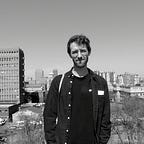Review | New perspectives from the Ecstatic Archive
Words by Dave Mann
This review was first published in Business Day.
Boundaries are difficult and far-reaching things. They can be fictional and concrete, intrinsic and ethereal. In addition to their geographical and political presence, they can find grounding in our minds, on our screens, and on maps. In the work of Gerhard Marx, boundaries are picked apart, repurposed, and reimagined.
Currently on show at Johannesburg’s Goodman gallery, Ecstatic Archive is Marx’s latest body of work for the gallery and refers to a series of archives he’s been working with over the past two years. This archive comprises of maps — many, many maps — that come from two main sources.
The first was a collection of decommissioned geographic, geological, and political maps from the past two centuries which were set to be pulped before Marx received a tip-off from a friend and subsequently scooped up the whole lot. The other source consists of sentimental maps donated by various individuals looking to get rid of them, but not being able to bear the thought of discarding them.
In Ecstatic Archive Marx has effectively repurposed these archives, painstakingly, through a process of cutting, pasting, and re-configuring them into the forms that we see exhibited.
Considering the origins of these maps is useful in making sense of the work presented in Ecstatic Archive. It is through these old maps that Marx begins to grapple with those grand, elusive elements we so often seek meaning for through art. History, longing, uncertainty, time, and place. The burden of being here, now, with so much already behind us and so much more to come. Technology and the new horizons it’s rendered at such speed, leaving behind all these things — tangible objects full of memory and meaning — for us to sift through and wonder: where to go from here?
In dealing with all these themes, Marx plays with the pre-existing functions and ideologies of maps, and of map-making. The first being the political and geographical layout of maps which, when engaged with through an aerial point of view, lends the viewer a kind of power — the ability to demarcate land and turn space into territory. Marx disrupts this power dynamic through fracturing both the map itself, and the way we view it. Works like ‘Laminate Landscape 1 and 2’ at once shatter the rectangular confines of conventional maps and reconfigure their access points through a series of disorientating perspective points. A piece like ‘Crossing’ makes use of simple line-work and intentionally large gaps in the artwork, leaving viewers to re-orientate themselves with the fragments at hand and do the work of piecing them together, anew.
Then there is what Marx refers to as the ‘ideological solid ground’ found in maps. By re-configuring roads, slicing up chunks of mountain, and displacing slivers of the ocean, Marx essentially ruptures the solidity of these maps. The effect of this is multifaceted. The past becomes contested, but the present also loses its grounding. And depending on how you look at it, the future could be foreign and chaotic, or it could be layered and multi-faceted.
This is perhaps best seen in ‘Shelter Topography (To Build a Cave)’ which takes the abstract form of a landscape, only with fragments of oceans and lakes forming the light blues of the sky, and vast mountain ranges, lone dirt roads, and bustling spaghetti junctions pieced together to form the textured terrains of a hillside.
For all the challenges that come with navigating the new terrains presented in Ecstatic Archive, Marx provides us with a compass of sorts in the form of a single sculptural piece situated on the floor of the gallery. Titled ‘Nearfar Object’ the piece is a sleek wooden geometric work made up of beechwood and milk paint. At a glance it could look like a large sheet of paper, crumpled up and tossed to the ground. On a more considered viewing, the work seemingly grows on itself, each smoothed-out fragment informing the next, before finding a collective shape. Viewing the piece in relation to the other works in the exhibition helps to unpack perspective and position oneself in relation to these reconfigured map fragments. It also sheds a little light on the artist’s patient and painstaking process of re-working fragmented and densely populated images into one cohesive, textured picture.
It’s difficult to view Ecstatic Archive and not think about the many boundaries and territories that exist in the contemporary world: Brexit, Trump’s wall, and our own debates about land. But then, the work Marx is doing ultimately exposes the fallacy of maps and of territories. It’s through the delicate folds, collapses, and intricate twists and turns in these works that the past, the present, and that hugely possible thing — the future — begin to leak into each other leaving us to map out a world that’s always shifting closer together.
Images courtesy of The Goodman.
